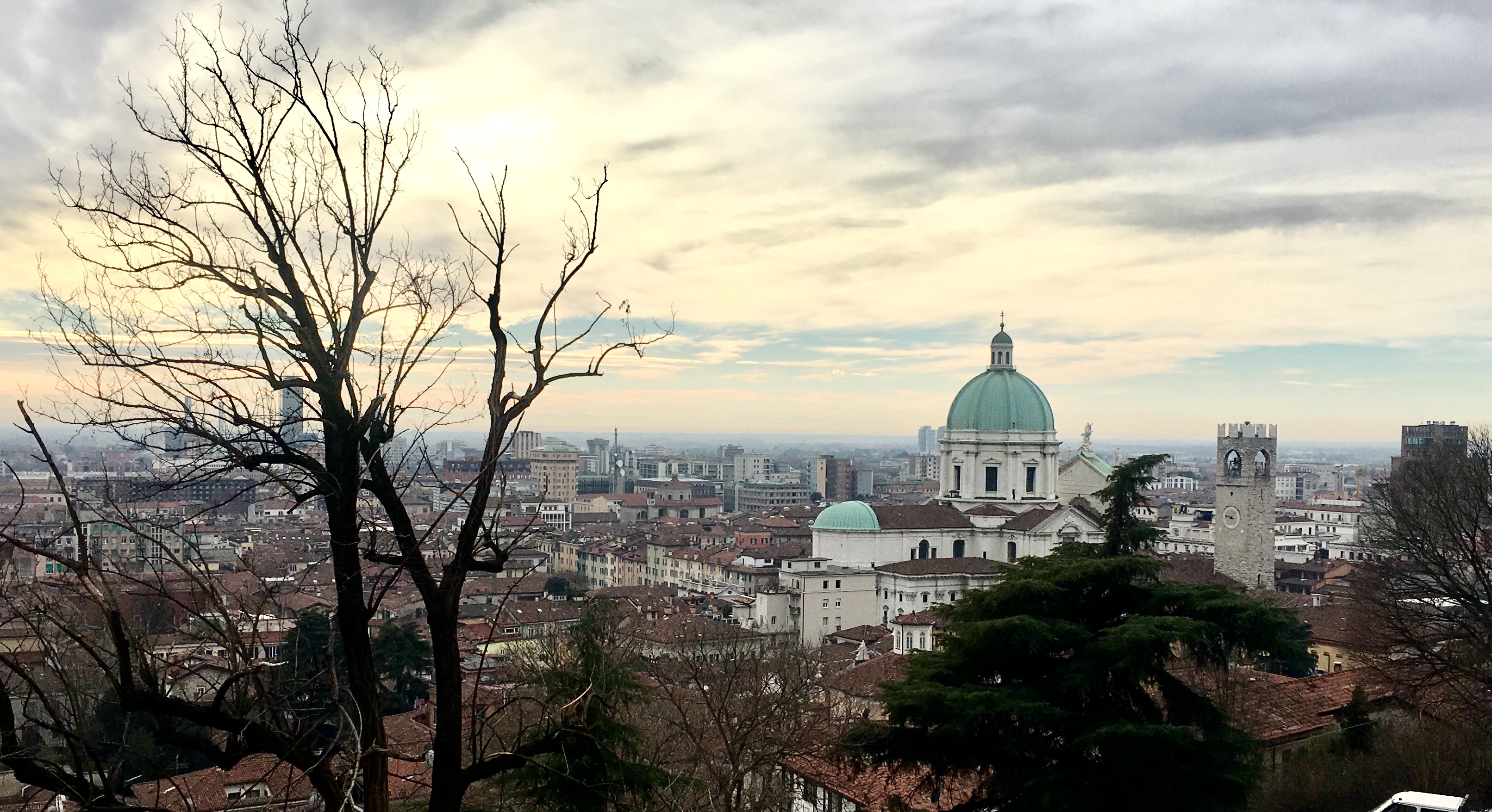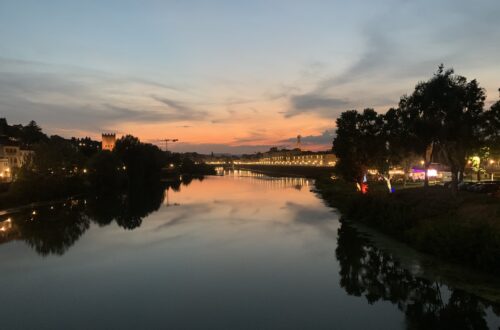There is something incredibly romantic about hopping on a train and heading to a city you know little or nothing about. Living in Milan, I often feel this urge to break out of the city, to head to a small town and wander the streets, exploring history on foot in a place where no one knows my name. Not that very many people know my name in Milan yet, and those who do pronounce it “May-gahn”. My name doesn’t translate so well. Anyway, I moved to Italy for that historic charm that tends to linger on sleepy cobblestones streets, in ancient churches, and around grand piazzas. And I feel it the most when I’m exploring smaller cities like Brescia.
I went on a cold Saturday in the beginning of January. It’s hard to like things on cold Saturdays in January. But I was really smitten with Brescia.
I climbed onto the regional train from Milano Centrale to Brescia at 8:30 am and an hour later I was at the station. I had done minimal research, and I knew of about three things I wanted to do, leaving the rest open to unfold according to my whims. I prefer to under-plan trips and leave room for a bit of mystery.
I followed the signs indicating the city center, and after about 15 minutes of walking, I found myself strolling into the beautiful Piazza Paolo VI. At the heart of the city, the piazza dates back to the middle ages. On one side you see the palace of Broletto, the oldest municipal building in the city which was once the political hub of Brescia. Adjacent to the tower, you can’t miss the Duomo Nuovo and Duomo Vecchio. The opposite side of the square is peppered with cafes where you can sit, sip a cappuccino and munch on a croissant while taking in the view.

Duomo Vecchio & Duomo Nuovo
As the third largest dome in Italy, the striking light green and white hues of the tower will serve as your compass as you wander the city streets. The new Duomo was begun in 1604 but not completed until the early 1800s. The inside is finished in sober stone hues, but the monumental pillars and intricately carved ceilings are awe-inspiring nonetheless. That morning, it was just me, a man vacuuming, and two nuns waiting to confess their sins; three people clearly in the church for very different reasons. It was kind of poetic if you ask me. I was looking up at the ceiling, while the vacuum-er was looking at me looking at the ceiling, and the nuns were looking from the confession box back to their feet, suspended in a moment between sin and salvation.
I wandered next door to the Old Duomo, a circular church called the “Rotonda” built in the 11th century on top of a preexisting church from the 6thcentury. Outside on the side of the building, you can glimpse the original doorway which was built below the current street level. I walked in and swirled down the subtle inclined ramp, circling the pews in the center and squinting against the dim lighting. A hint of small-town charm came to life in the series of Nativity scenes on display, left over from the Christmas season, that were hand crafted by the locals, all manifesting in very different interpretations of the event. I was intrigued by the fact that a WWII resistance meeting was held in the Crypt of San Filastro in 1943 among traces of Roman ruins found there. The inside is seemingly simple, but definitely intriguing given the history of the church.

Piazza della Loggia
Just a stone’s throw from the Duomo, the beautiful Piazza della Loggia is a gorgeous open square that was inaugurated in 1433. Dating back to 1492, the Renaissance Palace of the Loggia now serves as the town hall. On the other side of the square you’ll see an arcade type structure, with an intricate 16th century Clock Tower on the façade, with figures atop the building. As I arrived early, the market was set up in the square, trailing down the side streets. I watched as locals bargained over household goods, stocked up on vegetables, meat, and cheese, and dilly dallied through the January morning.

Roman Ruins: Brixia Parco Archeologico
If you stop in Brescia, you can’t miss seeing the Roman ruins, considered to be one of the most important archeological sites in northern Italy. Strolling past the colorful pastel buildings that give Italy its poetic charm, you suddenly stumble across the Capitolium, instantly impressive and bewilderingly out of place. Dating back to AD 73 and rediscovered in 1823, the Capitolium was a religious site and the cultural hub of the city, then called “Brixia.” The remains of the ancient temple stand at the center, looming, looking a lot like something large took a bit out of the ancient columns. To the right of the temple you’ll find the remains of a Roman amphitheater, which is estimated to have held fifteen thousand people. It was used as the center of entertainment and social meetings, conjuring up images of the bustling Empire that once was. The site includes a museum for those who want to see recovered artifacts and learn more about this UNESCO World Heritage Site.

Castello
A climb up to the Castello is well worth your breath. At the top of Cidneo Hill, the castle offers a breathtaking view of the city of Brescia, the mountians, and the countryside. Stroll along the battlement walls built by the Visconti, and admire the formidable drawbridge entrance, created by the Venetians who controlled the city for centuries. Within the castle walls you’ll also find the Luigi Marzoli Arms Museum, which boasts a collection of European armor and weapons. The Museo di Risorgimento is also located in the castle’s Grande Miglio building, containing a collection of artifacts, paintings, and documents. Walking around the castle walls you get a view of snow capped mountains bordering on one side, the silhouettes of the ancient city to the front, and rolling green hills peppered with villas in back. I always like to climb up to these high points for the panorama of the city and of course, to work on my glutes. It’s a great spot to stop and think, or stop and take a break from thinking.

Pinacoteca Tosio Martinengo
Located in a gorgeous piazza in the city center, the Pinacoteca offers 25 exhibition rooms with paintings from the 13th to 18th centuries. Stroll through the grand galleries, which contain masterpieces by the likes of Rafaello Sanzio, Romanino, Moretto, Tintoretto, and Canaletto. The collection is a must-see for any art-enthusiast and is a decent size without being too overwhelming for an afternoon. I popped in around 3pm and stayed for about an hour and a half.
These are the attractions I chose to see, but the city is full of beautiful museums, churches, piazzas, and places to eat of course. Regardless of your interests, it’s safe to say that la bella città di Brescia is worth a visit.
Xo,
Megan





